Anatomy of a Crayfish
External Anatomy of a Crayfish Worksheet
Introduction: Crayfish belong to the Kingdom Animalia which includes all organisms that must consume their food (heterotrophs) and are multicellular. Within this kingdom are subgroups, known as phyla. The crayfish belongs to the Phylum Arthropoda, which includes organisms that have an exoskeleton, jointed appendages and segmented bodies. In fact, the word "arthropoda" means "joint-foot".
Crayfish have two main body areas: the cephalothorax, which consists of the head and upper body, and then the abdomen, which is clearly segmented. You can find appendages on both areas.
Head
Focus on the head, you may notice small appendages around the mouth. These are called the MAXILLIPEDS, and there are three sets, one on top of the other. On the photo below you can see the topmost maxillipeds. These appendages help the crayfish manipulate food.
The MANDIBLES of the crayfish are similar to the jaws of humans. They are strong and can break the hard shells of many aquatic animals. Crayfish can eat fish, other invertebrates like crabs and shrimp. They are generally carnivorous and can harm fish in your tank if you try to keep them as pets. The interesting thing about mandibles is that unlike human jaws, the jaws of the crayfish open from side to side.
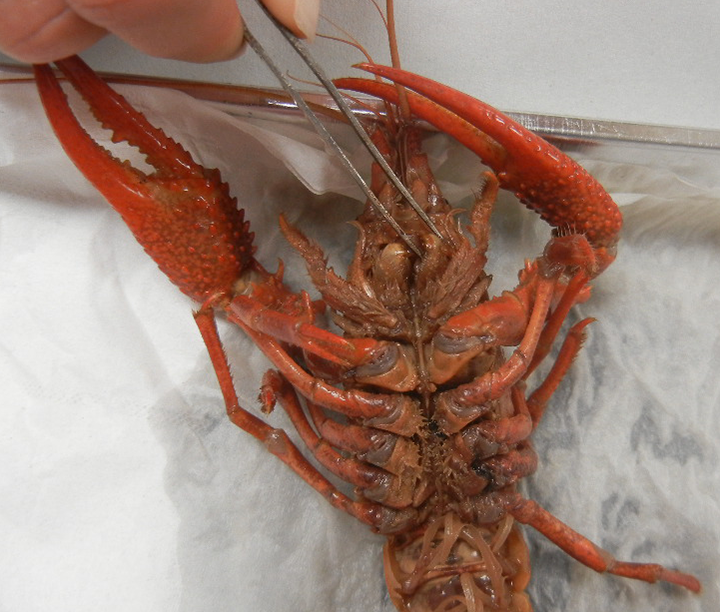
The head also has a set of eyes that are mounted on stalks called PEDICLES. If you watch a live crayfish, you can see the eyes move independently. The crayfish also has two sets of ANTENNAS that help them gather information about their environement. The smaller set is called the ANTENNULES.
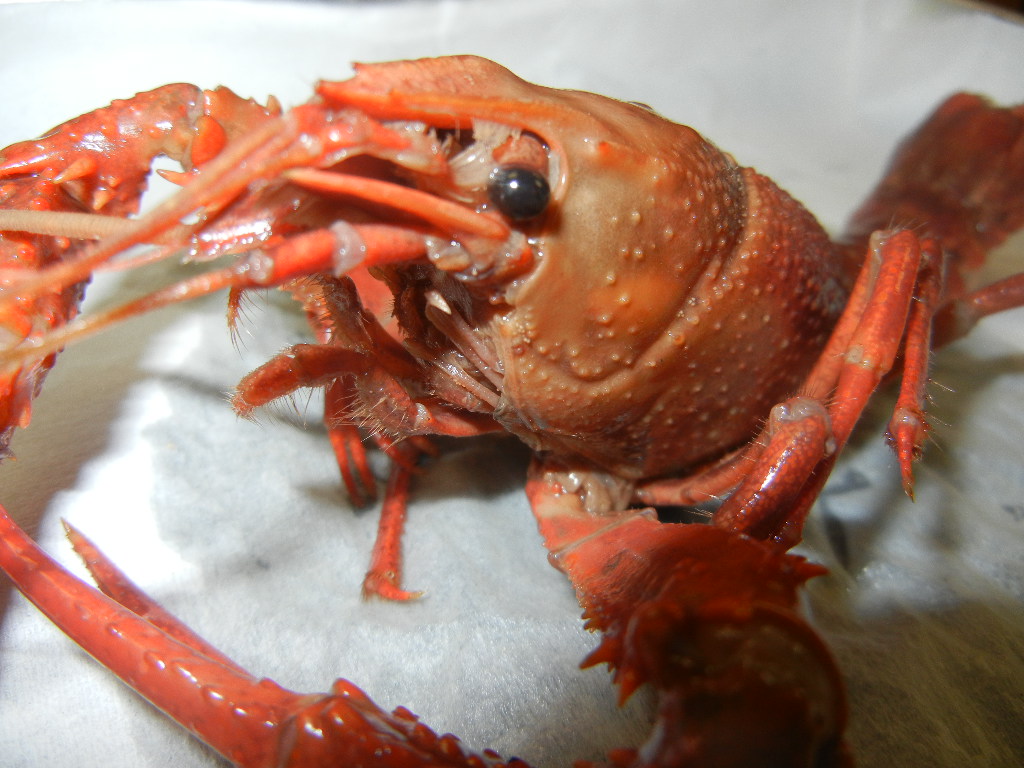
Cephalothorax
The cephalothorax as seen in the above picture makes up the crayfish's midsection. There is a tough armor that covers the vital organs and part of the head, this part of the exoskeleton is called the CARAPACE. Note how the carapace extends over the head and between the eyes, this structure is called the ROSTRUM.
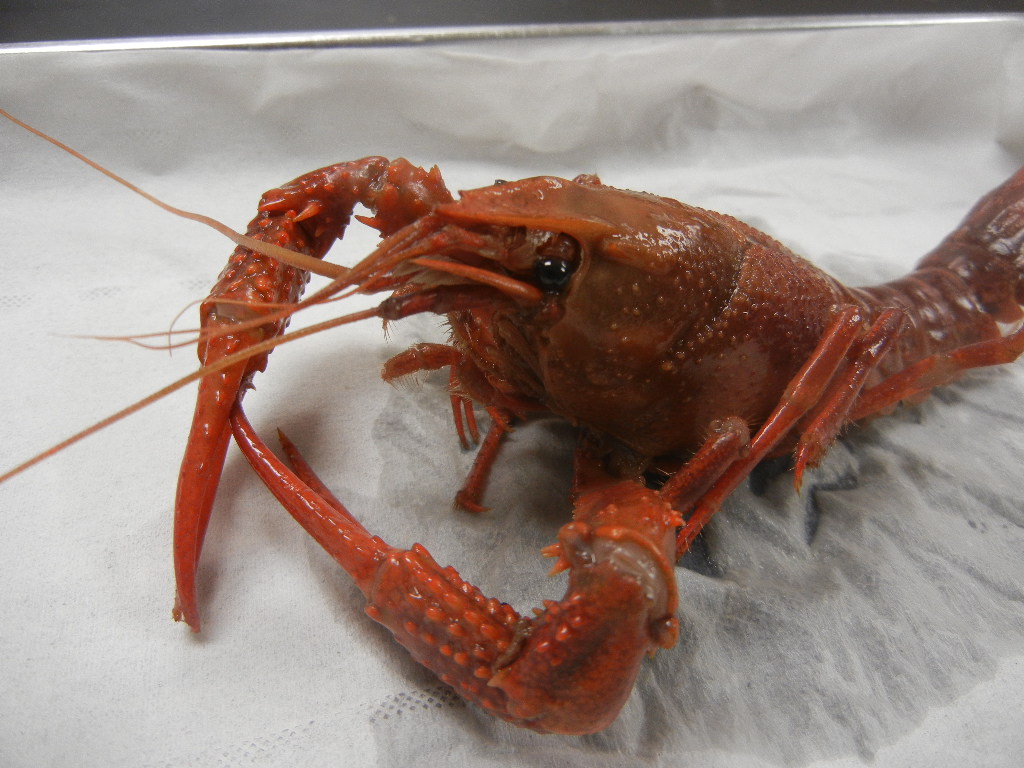
Abdomen
The abdomen is flexible and the segmentation is visible here. The appendages of the crayfish attach to both the cephalothorax and the abdomen. The appendages that attach to the thorax are called WALKING LEGS and you can see how they are jointed in the figure below. The smaller appendages attached to the segments of the abdomen are called SWIMMERETS. The image shows a female crayfish; in males the first set of swimmerets are enlarged for grasping the female during copulation.
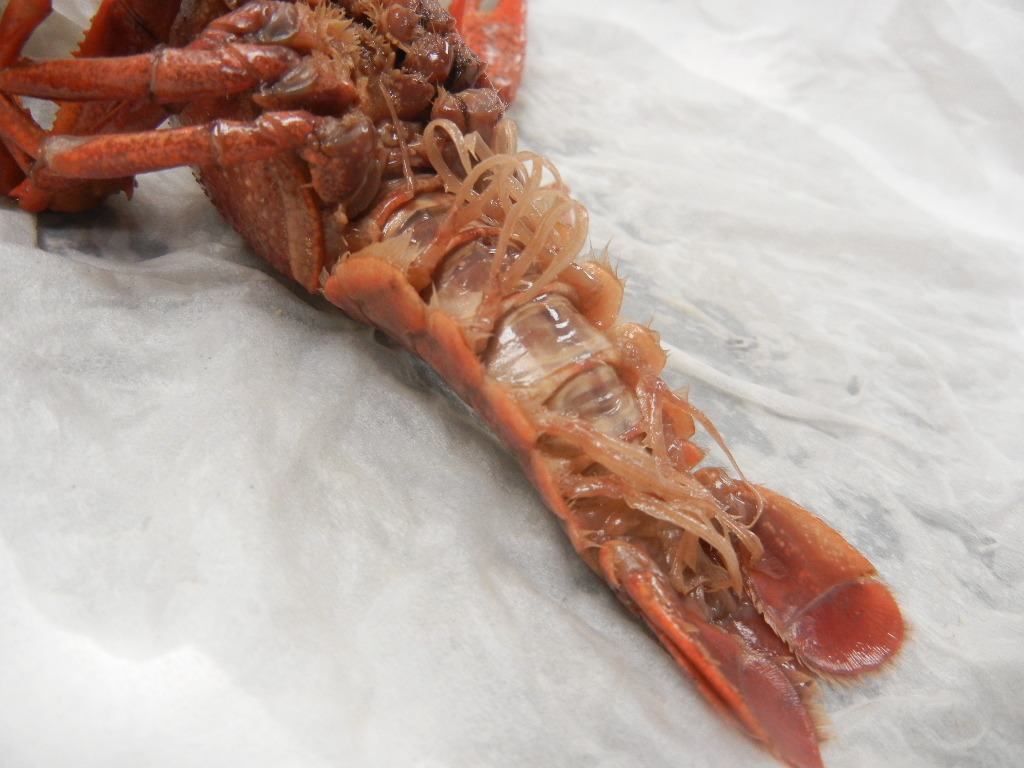
Notice the large claw on the crayfish. This claw is called the CHELIPED, it is also jointed and the crayfish uses it to capture food and for defense.
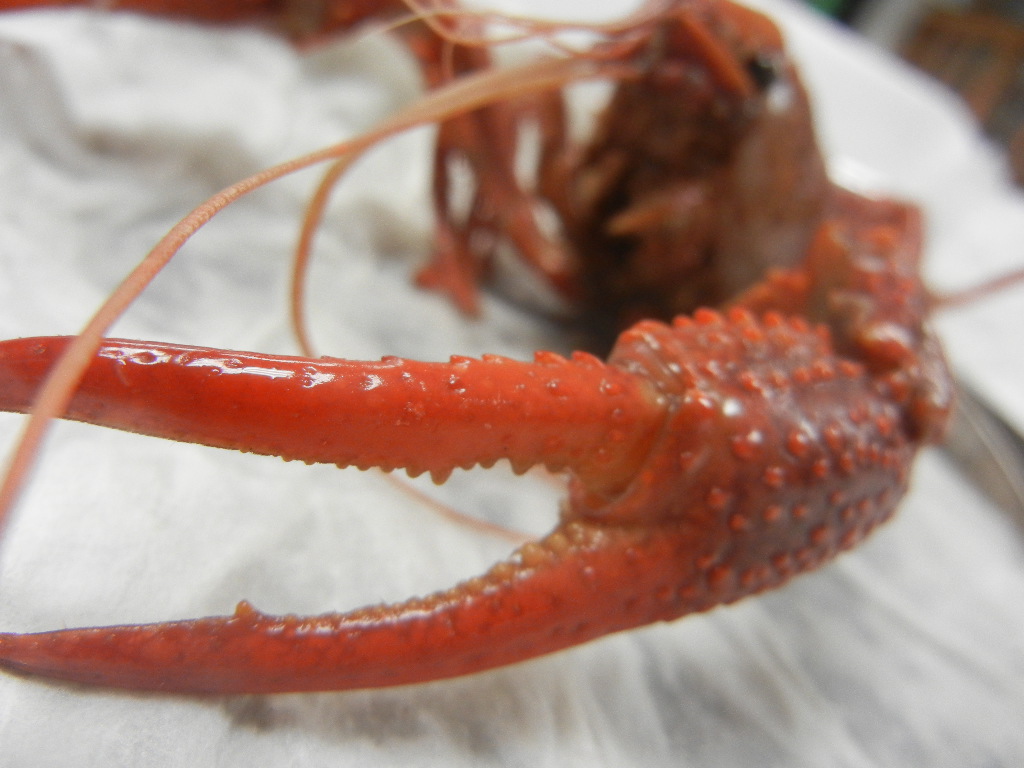
The very last segment of the crayfish is a special segment called the TELSON, which has fan-like fins that extend to either side. Crayfish can either walk on the bottom of the ocean or lake, or use their urepods to propel them through the water. Crayfish are very fast and can be suprisingly difficult to catch.
Observe this video of a crayfish swimming:
Crayfish Resources:
- Crayfish Labeling – simple diagram with word bank
- Arthropod Coloring – compares anatomy of crustaceans, spiders, and insects
- Arthropod Dating Profile – short research project to showcase a single species